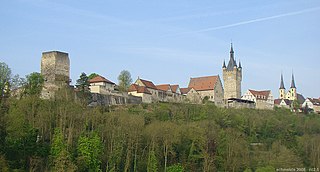Life
His father was the district veterinarian. In 1871, his family moved to Grünberg and he attended the Gymnasium in Laubach. In 1888, he entered the Academy of Fine Arts, Karlsruhe, where he studied under Ferdinand Keller. With a scholarship from the Grand Ducal Ministry of the Interior, he undertook further studies in Munich, Vienna and Italy. In 1900, he exhibited at the Glaspalast. Although he was officially enrolled at Karlsruhe until 1905, he actually pursued his studies with Robert von Haug in Stuttgart. He briefly lived in Darmstadt, then returned to Grünberg in 1905 although, as a free-lance painter, he travelled frequently to visit his clients. After 1915 he lived in Wimpfen.

Grünberg is a town in the district of Gießen, in Hesse, Germany. In 1980, the town hosted the 20th Hessentag state festival.

Laubach is a town of approximately 10,000 people in the Gießen region of Hesse, Germany. Laubach is known as a Luftkurort, a climatic health resort. It is situated 23 kilometres (14 mi) east of Gießen. Surrounding Laubach are the towns of Hungen, Grünberg, Schotten and Lich.

The State Academy of Fine Arts Karlsruhe, German: Staatliche Akademie der Bildenden Künste Karlsruhe, is an academy of arts in Karlsruhe, in Baden-Württemberg in south-western Germany. It is one of the smaller German art schools, with an average of 300 students.
World War I hit him very hard; especially the loss of friends such as August Macke and Franz Marc. In response, he abandoned impressionism for a gloomier Academic style and his output decreased dramatically.

August Macke was a German Expressionist painter. He was one of the leading members of the German Expressionist group Der Blaue Reiter. He lived during a particularly innovative time for German art: he saw the development of the main German Expressionist movements as well as the arrival of the successive avant-garde movements which were forming in the rest of Europe. Like a true artist of his time, Macke knew how to integrate into his painting the elements of the avant-garde which most interested him.

Franz Moritz Wilhelm Marc was a German painter and printmaker, one of the key figures of German Expressionism. He was a founding member of Der Blaue Reiter, a journal whose name later became synonymous with the circle of artists collaborating in it.
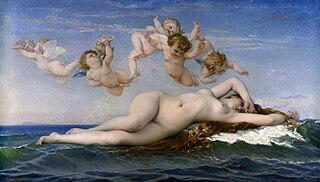
Academic art, or academicism or academism, is a style of painting, sculpture, and architecture produced under the influence of European academies of art. Specifically, academic art is the art and artists influenced by the standards of the French Académie des Beaux-Arts, which was practiced under the movements of Neoclassicism and Romanticism, and the art that followed these two movements in the attempt to synthesize both of their styles, and which is best reflected by the paintings of William-Adolphe Bouguereau, Thomas Couture, and Hans Makart. In this context it is often called "academism", "academicism", "art pompier" (pejoratively), and "eclecticism", and sometimes linked with "historicism" and "syncretism".
The Carl-Geist-Straße in Grünberg is named after him.

Bernhard Studer was a Swiss landscape painter.

Gabriel (von) Hackl was a German historicist painter.
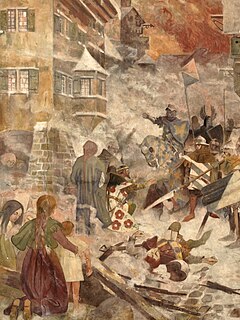
Gustav Adolf Carl Closs also as Closs, A., Closs, A.G., Closz, Adolf Gustav was a German painter, illustrator and heraldist and an entomologist.

Edmund Harburger was a German painter and draftsman.
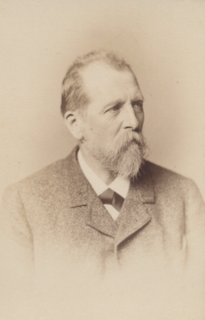
Ernst Wilhelm Hildebrand was a German painter. Many art websites mistakenly identify him as "Swiss".

Ernst Deodat Paul-Ferdinand Ewald was a German painter.

Carl Maria Nicolaus Hummel was a German landscape painter and etcher.

Franz Ignaz Oefele was a German painter, etcher, and miniaturist. His name is sometimes spelled "Öffele" and is occasionally seen as "Oeffele-Piekarski", for reasons unknown.
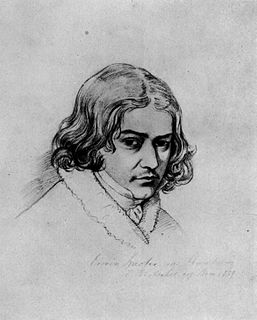
Erwin Speckter was a German painter, often associated with the Nazarene movement.

Hans von Hayek was an Austrian-born German Impressionist painter.

Anna Klein was a German landscape, animal and genre painter. She specialized in motifs from Upper Bavaria and Tyrol and designed many utilitarian items such as labels, bookplates and postcards in addition to her canvases. A large number of her paintings may be found at the Gemäldegalerie Dachau, where a retrospective was held in 2008.

Pius Ferdinand Messerschmitt was a German painter, illustrator and watercolorist; noted for genre and historical scenes, most of which include horses.

Johann August Wilhelm Sohn was a German genre painter and art professor.

Karl Friedrich Rudolf Sohn was a German portrait painter in the Academic style.
Hans Baur was a German sculptor.

Henri-Guillaume Schlesinger, originally Wilhelm Heinrich Schlesinger was a French portrait and genre painter of German birth. He was especially known for his lively and sensitive depictions of young women.

Hermann Baisch was a German painter and illustrator who specialized in landscapes and animals. He was one of the first artists in Germany to work in the French influenced "paysage intime" style.
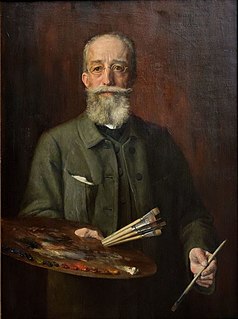
Julius Victor Carstens was a German painter. He worked in a variety of genres; including portraits, landscapes and still-lifes. He also painted a few church interiors.

Carl Jungheim was a German landscape painter, associated with the Düsseldorfer Malerschule.

Robert Scheffer was an Austrian painter. He specialized in landscapes, genre scenes and portraits. He was also an art collector and operated a private art school.
This page is based on this
Wikipedia article Text is available under the
CC BY-SA 4.0 license; additional terms may apply.
Images, videos and audio are available under their respective licenses.



